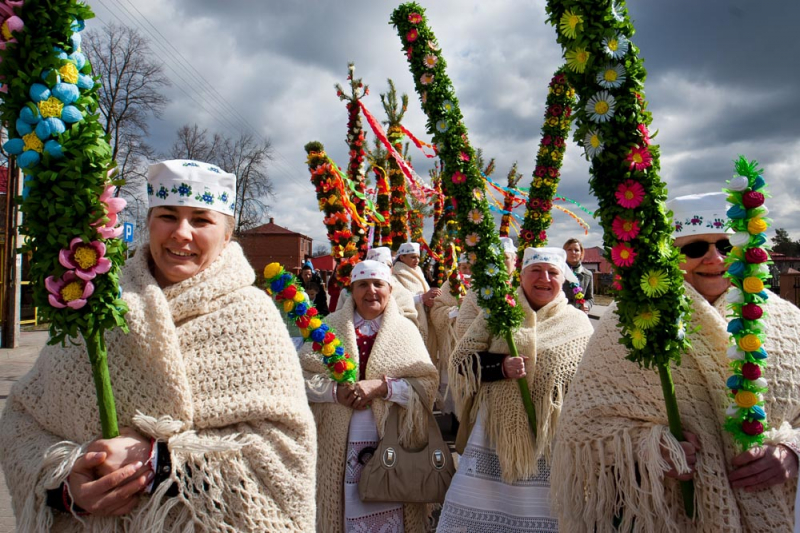Easter Celebrations
Poland is a country rich in traditions and customs, particularly those associated with the Catholic faith. Easter is one of the most famous festivals in Poland. For many people, Easter begins a week before on Palm Sunday, continues through Holy Week, Easter Saturday and Sunday, and ends on a somewhat damp Easter Monday.
The triumphal arrival of Christ into Jerusalem is commemorated on Palm Sunday. It commemorates the end of Lent and the start of Holy Week, during which the faithful prepare for Easter celebrations. On Palm Sunday, churches are decked with bright "palm trees," which are usually built from willow branches and decorated with evergreen plants. Some of these palms can grow to be more than 19 feet tall.
Every year on Palm Sunday, a unique celebration takes place in Lipnica Murowana's market square, where locals compete to produce the largest plaited palm. The difficulty of carrying such a large, colorful construction, which stands at an average height of 65 feet.
Various spiritual and traditional celebrations take place throughout Holy Week. Polish households clean their homes in preparation for Easter by doing spring-cleaning, shopping, and cooking traditional Easter meals. Making Pisanki is one of the most colorful traditions, but it also demands practice and talent. Hand-painted and elaborately adorned, this Polish rendition of a traditional Easter Egg is popular.
Baskets of traditional Easter delicacies are taken to church on Easter Saturday to be blessed. Following its blessing, the dish is eaten as part of the Easter Sunday feast known as the Easter Breakfast. Hard-boiled eggs, cold cuts, smoked meats, vegetable salads, babka, and other foods make up the Easter Breakfast.
Smigus Dyngus, or Wet Monday, is a Polish family holiday commemorating the ritual of individuals pouring water on each other on Easter Monday. It's best to presume that no one is safe from the Smigus Dyngus tradition on this day!
Location: RynekGlowny Central Square, Krakow.
Held On: April












